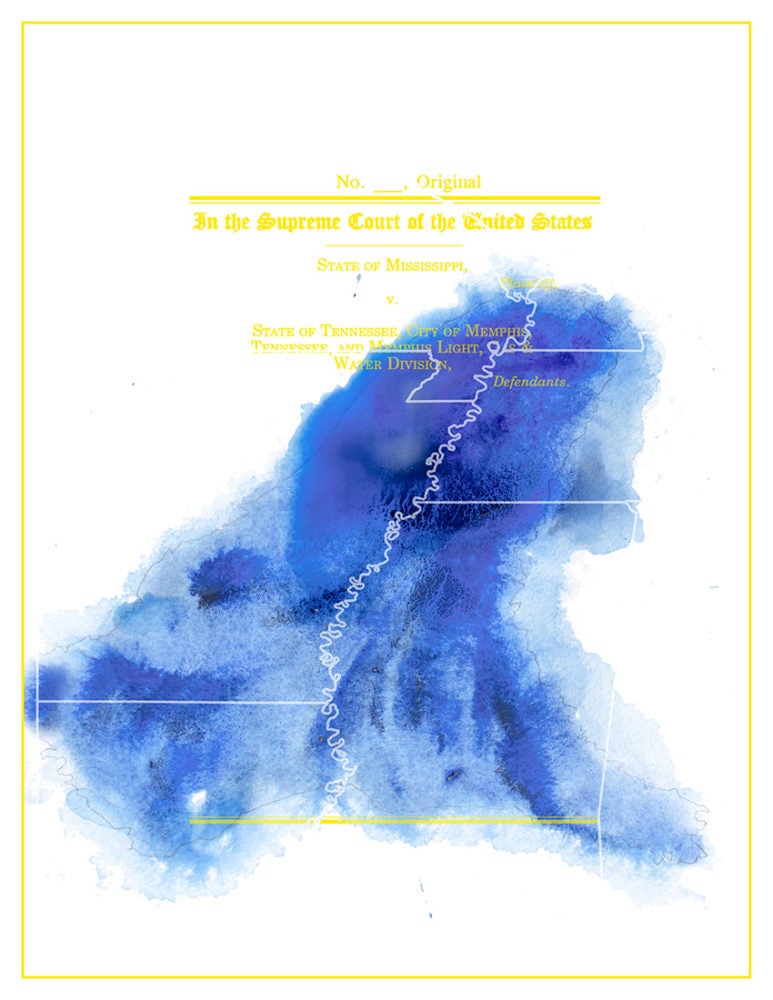
On February 25, 2020, the Honorable Eugene E. Siler heard the closing arguments from the states of Tennessee and Mississippi regarding a dispute over who owns the groundwater in the Middle Claiborne Aquifer, one layer in the larger Mississippi Embayment Aquifer system, a mushy layer cake of rocks and water that spreads underneath seven states. Judge Siler will send his recommendations on the ruling to the Supreme Court, making this the first groundwater case ever ruled on by our nation’s highest court. While surface water use disputes are common, particularly in the arid west, this case is conceptually striking as it begs us to imagine ancient waters flowing below our terra firma, beneath our farms and cities, fashioning us as flotsam on this slushy substrate. While the cartographic boundaries of our states are often revealed as absurd by the landscape (think orthogonal lines slicing up a watershed into a jigsaw of bureaucracy), the invisibility of the aquifer upends our understandings of state sovereignty and commodification as its waters slowly move below state lines, evading easy classification and possession.
It may seem strange to talk about water shortages in a region known for its abundance, but what aquifers have that streams and rivers lack is a built-in purifying system and easy accessibility—just drill down. These hidden sources of clean water, used for both farming and drinking, are quickly becoming depleted; NASA believes that twenty-one of the thirty-seven major aquifers in the world are running a deficit. With twenty-five to forty percent of the world’s population relying on groundwater as its primary drinking source, this presents a serious problem. In Mississippi, the aquifer that farmers use for irrigation is declining by one to one-and-a-half feet each year, setting the stage for water shortages, farming failures, and legal battles [1].
Unlike a mountain or river, which are defined by height or flow rates, an aquifer is, according to the testimony of an expert witness, “a rock or sediment layer capable of transmitting usable quantities of water”—in other words, a commodity. The entire case of Mississippi v. Tennessee rests on the question of whether this invisible commodity is owned by whichever state it is under, or if it is an interstate resource and therefore governed, like many rivers, by the law of equitable apportionment, where each state is granted “fair” usage rights. Armed with the most basic knowledge of osmosis, it is hard to imagine how one state could assume ownership of groundwater, especially in an aquifer. But, to some extent, I think that is the State of Mississippi’s point—how do we carve up a system that is so interconnected? The unit of an aquifer may appear as a tangible object, but it is, as so many experts testified, connected to the aquifers above and below it, the surface streams, oceans, and, ultimately, the clouds above us. The arbitrary divisions of state lines have served as borders for many a complex system, so why not for this one as well?
Translating complex systems such as aquifers into policy guidelines requires editing out nuances and drawing averages. This loss of intricacy occurs as one converts system to science and science to policy, which is then further warped by the intersections of history and culture. Compared to the complexity of reality, the language and laws we use to describe water appear alternately as humorous, poetic, or absurd. In Mississippi v. Tennessee, hydrological and geological experts testified for both sides, bringing their detailed knowledge of aquifers to bear upon the case. As court proceedings are recorded in text, the visuals that were presented to support the oral arguments were described in detail by these experts, adding another layer of distortion as image is rendered into word. These collages are my own interpretations of the phantom visuals and terms presented by the experts and lawyers on both sides of the case. The work is not an attempt to articulate anything factual, or a winning argument, but rather draw out the ambiguities of the case using the language of law and mapping to explore the paradoxes and limits inherent to borders and ownership, especially when it comes to water.
What is striking to me upon reading through these court documents is that, by claiming to own the water, Mississippi loses its ability to present an argument about fair usage. In doing so, the City of Memphis can continue to “actively promote the fact that it has the best water at the lowest cost in the country for economic development….claim[ing] to have the sweetest water in the world, delivered at half the costs of much of the country and one-third the costs of cities which have to highly treat their water.” This promise of cheap and clean water has attracted biotech and beverage companies, whose use of the water will, of course, eventually impact Mississippi even more.
The nineteenth-century geologist and geographer John Wesley Powell, who led the first American government-sponsored passage through the Grand Canyon, took a prescient view on water issues in the West. By understanding how the limitations of water would affect farming, he forecasted the environmental havoc of the Dust Bowl. He saw the bigger picture and asked those around him to adapt to the realities of the environment, rather than plow through them. The industrial titans of the nineteenth century ignored him, preferring profit and power, and so the same issues still face us today, merely complicated by the intervening decades of use and patchwork of subsequent laws. What is the best way to demarcate boundaries and govern water? Should a soda company be able to profit from cheap, clean water filtered by the soil of a neighboring state? How do we ensure a clean water source for the future? By skirting these questions, we only further delay the broader repercussions of an already mounting crisis. As Powell famously said, “Gentlemen, you are piling up a heritage of conflict and litigation over water rights, for there is not sufficient water to supply the land.”
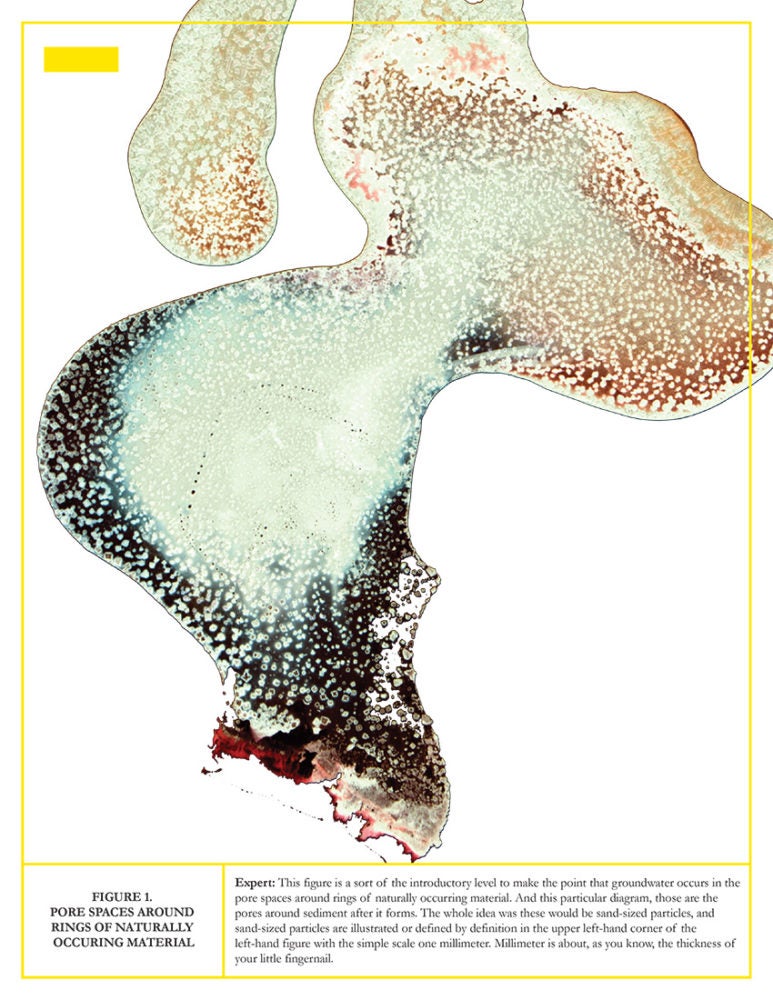

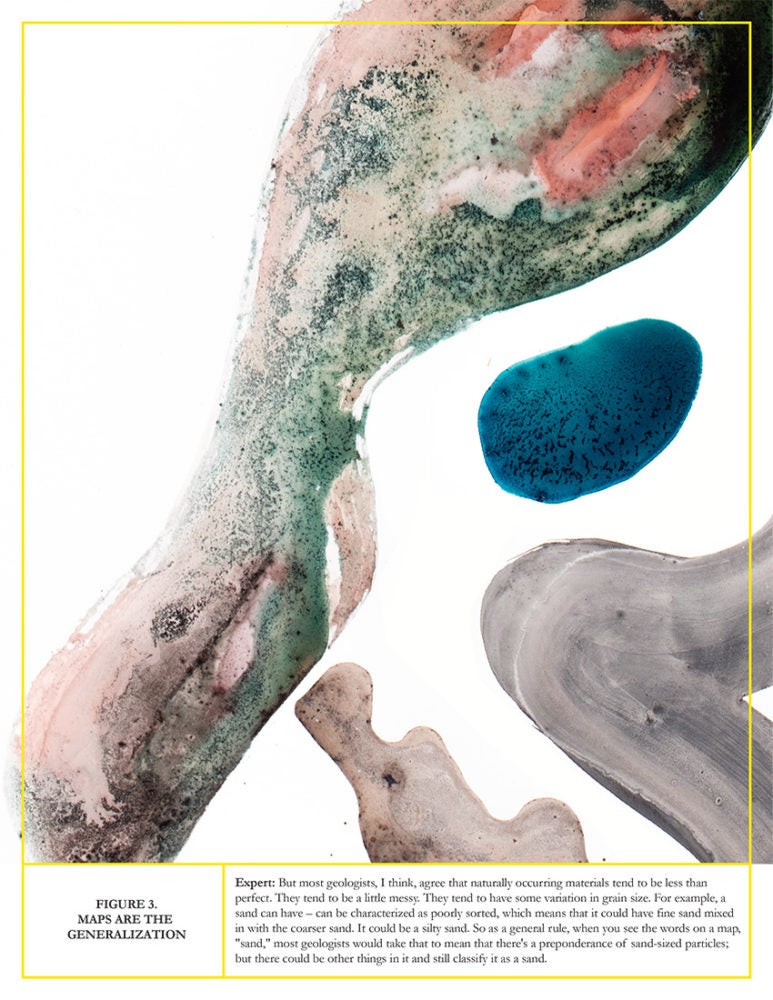

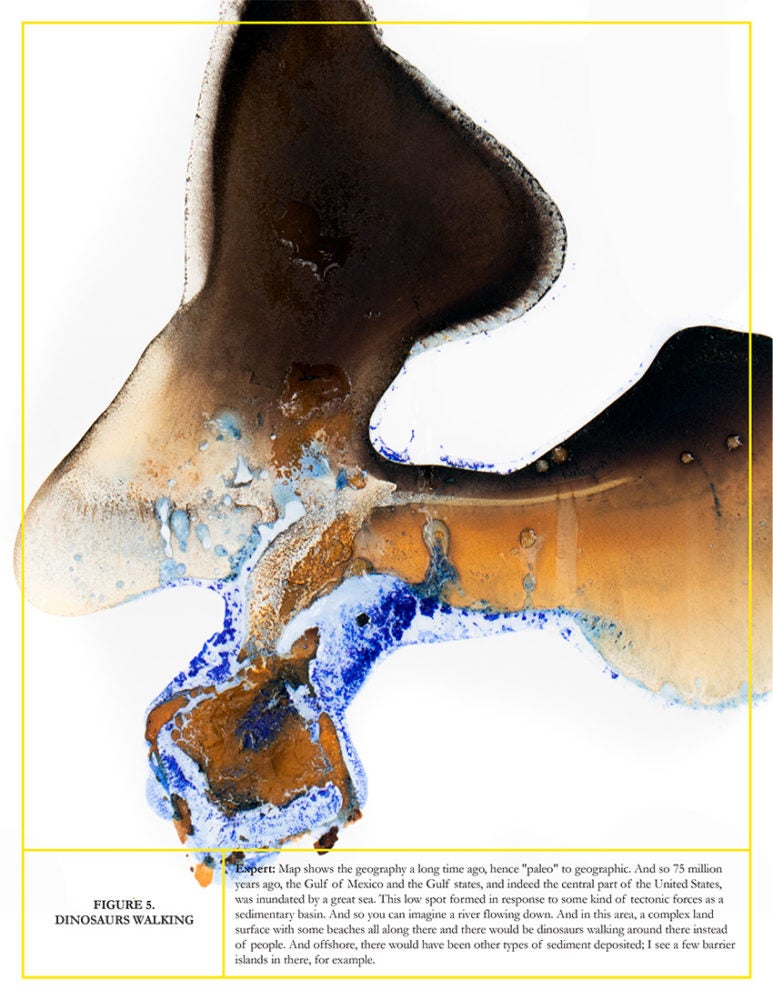
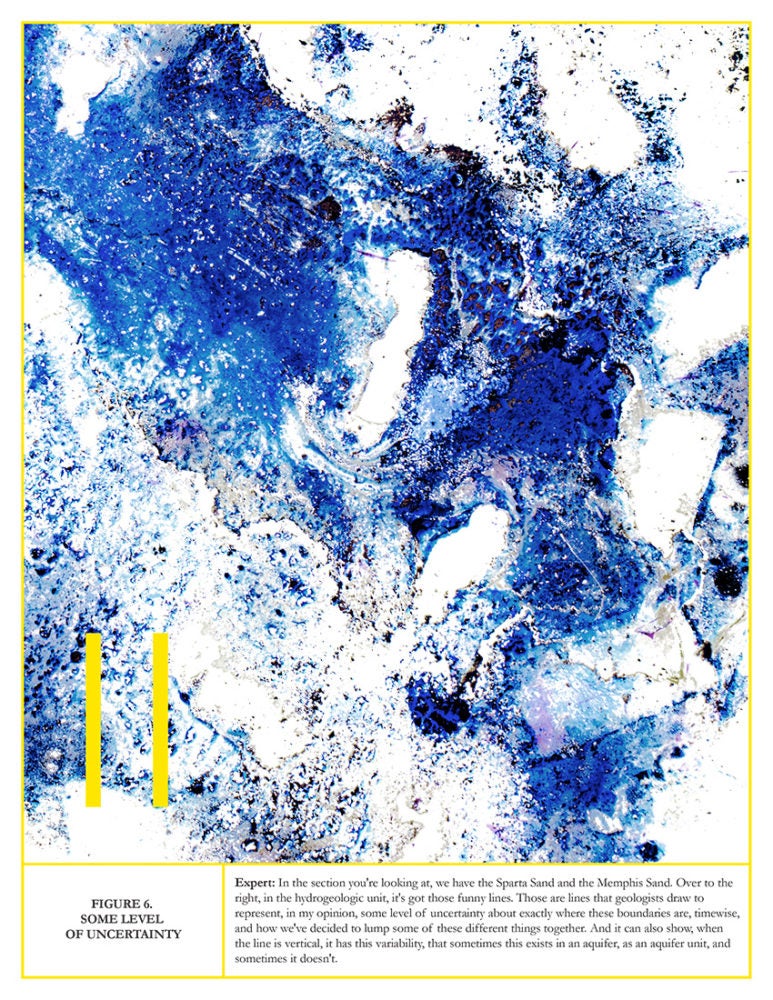
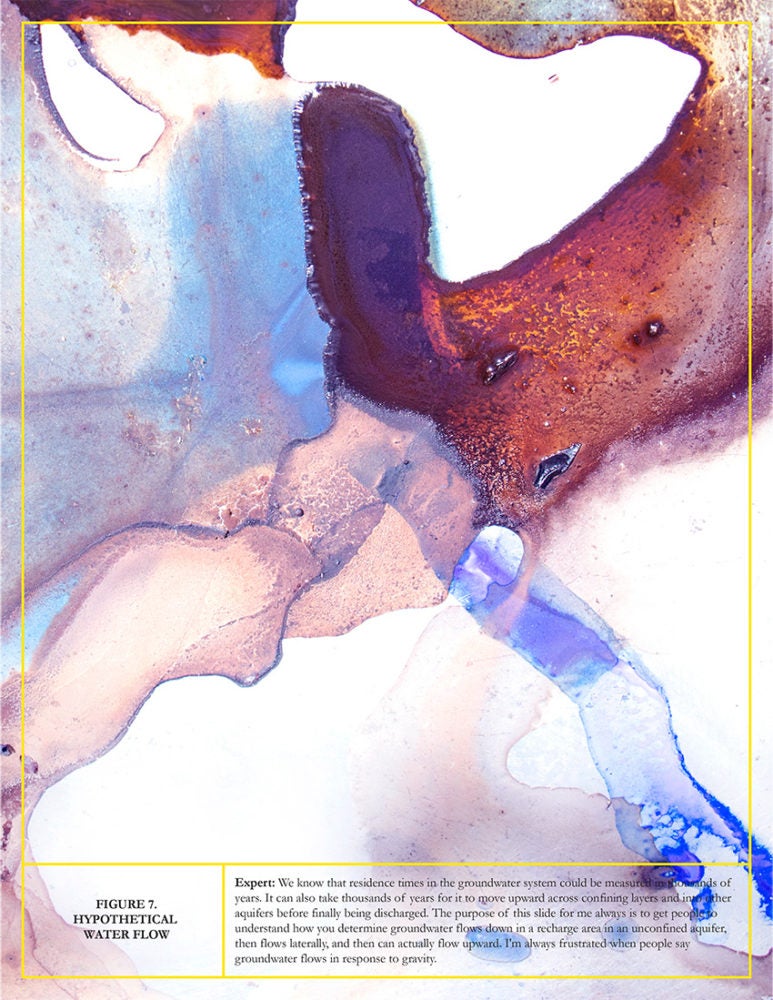
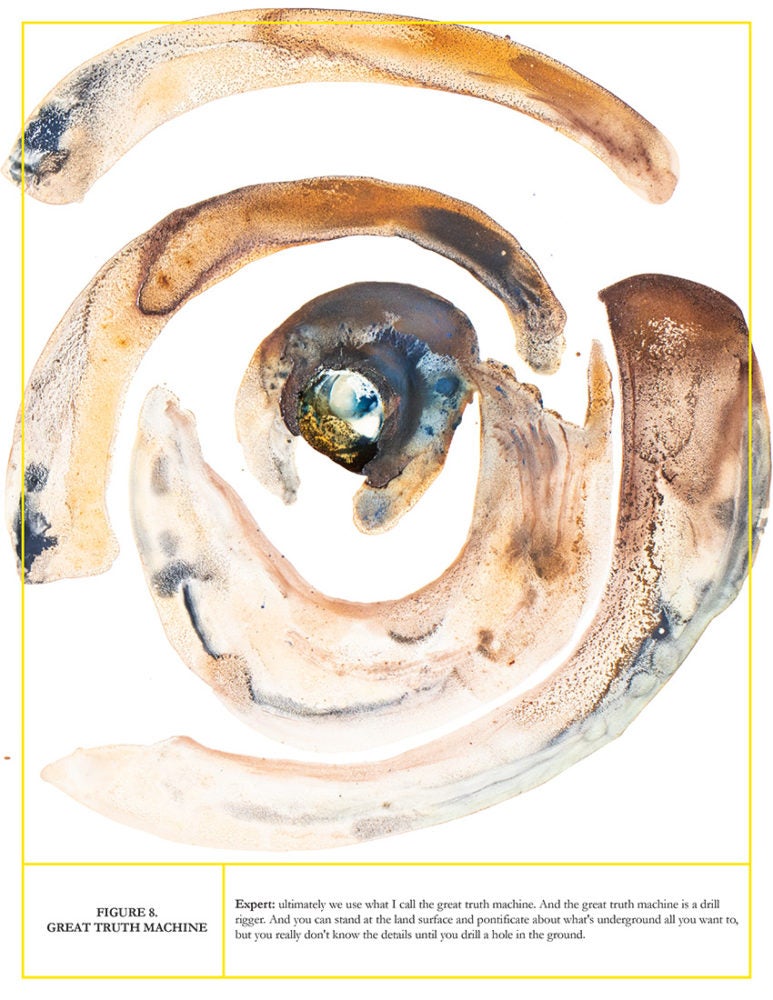
[1] Boyce Upholt, “Two States Are Fighting Each Other for Groundwater,” The Atlantic, December 4, 2015.
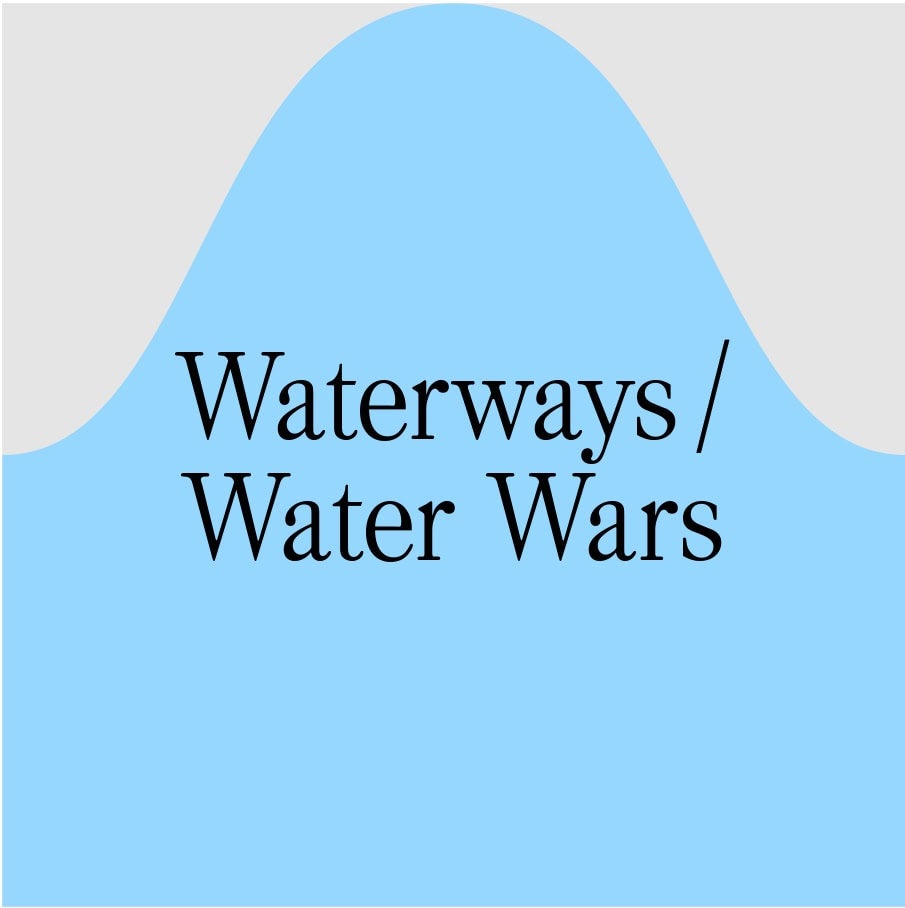
This artist project is part of Burnaway’s yearlong series on Waterways / Water Wars. Return to Burnaway tomorrow for the second half of the project.
Find out more about the three themes guiding the magazine’s publishing activities for the remainder of 2020 here.




